When you walk down the aisle of your local grocery store, you’ll notice many different types of packaging on the shelves - cardboard, PET, plastic - everything. But what about the secondary and tertiary packaging that never makes it to the shelf? This type of product packaging is essential and ensures that your product makes it to the grocery store and the homes of your customers intact.
If that secondary and tertiary packaging doesn't do its job, it can have a profound negative effect on the end user's experience with product loss or damaged product.
What type of packaging equipment is used to code all types of packaging? Secondly, with all of the options for coding and marking on packaging, what are your options for your operation?
Primary Packaging
Primary packaging is the initial packaging that a product might come in, like a pouch, bag, or carton in most instances. This packaging is designed to hold the product, protects the product from damage during transit and in the case of food packaging, provide a barrier to keep your food fresh, safe, and ready for use.
One of the more prevalent types of primary packaging equipment is Vertical Form Fill and Seal (VFFS). This type of equipment takes film, flat on a roll, and forms it into the shape of a bag or pouch
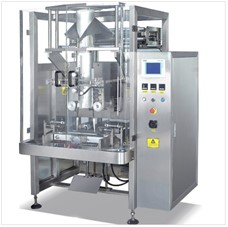
Coding and marking on this type of equipment needs to be done towards the back of the machine, where the film comes off the roll and can be printed on while the film is flat and before the forming process begins.
Thermal Transfer Overprint (TTO) is the preferred method to print on this film, and offers flexibility to print most any text, graphic or machine-readable code like a UPC. TTO provides a crisp, clear code and uses ribbon rather than an ink to print, so it is a clean process, with very little to no residue or contamination where the printing occurs.
Other options to pair with VFFS equipment would be Thermal Ink Jet (TIJ) and even laser in some instances.
A variant of the VFFS is known as a stick pack machine. This takes a roll of film like a VFFS, but cuts the roll of film into multiple strips, which are then individually formed into small tubes or stick Domino D-Series CO2 Laser Marking This would be similar to something you might see in a drink mix or nutraceuticals.
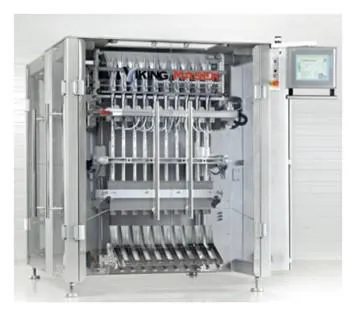
Since you have to print on multiple packages at the same time with a stick pack machine, it can be somewhat challenging to capture all lanes with one machine. Many times, a TIJ system with multiple heads is used to hit each of the individual lanes. Another option might be either a TTO or TIJ on what is called a transverser, which moves across the film to print on each of the lanes with only one printhead. Laser marking might be used as well, but generally this is for multi-lane machines that have fewer lanes than a true stick pack machine.
Similar to a VFFS is a Horizontal Form Fill and Seal (HFFS). If you were to look at a package from a HFFS system, you would notice that it looks very similar to a VFFS package, in that it generally has a top and bottom seal, along with what’s called a “fin seal” that forms the two sides of the film together. HFFS is used where the product cannot be dropped into a bag like VFFS, but where the product needs to be placed into the formed bag, whether automated or by hand. Something like a pack of cookies or a pre-made sub sandwich would be a good example of a product produced on a HFFS machine.
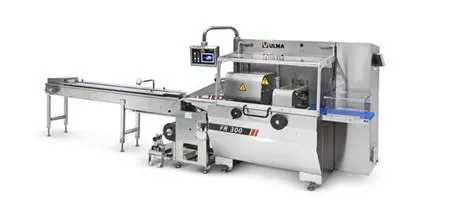
Like VFFS, TTO, TIJ or laser would be a good choice for integration with this type of technology.
Pouch fillers utilize either a roll of film that is formed into a pouch through a series of forming and sealing sections, or can utilize a pre-made pouch, which is then indexed from station to station for filling, gas flushing and sealing.
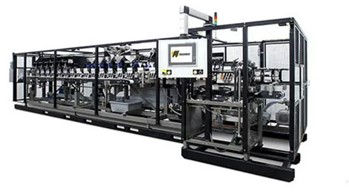
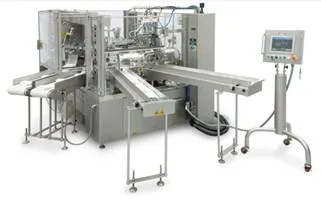
These can be a bit more challenging to integrate coding and marking equipment with than some of the other packaging technologies. For a pouch machine that forms and fills the pouch, it would be like VFFS where you would integrate a TTO or TIJ when the roll of film is flat, towards the front of the machine. For a pre-made pouch machine, the best option in many cases would be to integrate either a TIJ or Continuous Ink Jet (CIJ) at one of the stations before the pouch is filled. Material handling and ensuring that the pouch is flat and not in motion is key to Domino M-Series Print & Apply able to print a clean and clear code.
Tray pack machines are designed to take a roll of a thicker plastic film and form that into the bottom of a tray, then take a thinner layer of plastic film to seal the top of the package. Think about a package of bologna where the meat is held in the tray section of the package with a resealable film for a top. This type of equipment is very widely used in the meat industry for lunch meats and ground meats.
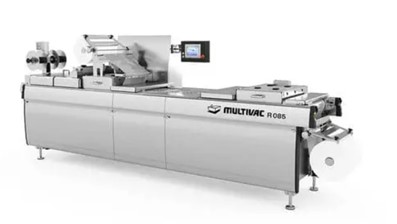
These type of packaging machines may be several lanes wide and may index more than one cycle at a time. That does make it one of the more challenging types of packaging equipment to integrate with. Most solutions involve several TTO printers mounted in series on the line to cover all lanes or a multi-head TIJ solution that allows for print on each of the lanes. In some cases, a traverser like what might be used on a stick pack machine can be an option as well.
One other group of primary packaging would be bottling and canning equipment. Bottlers can perform functions from filling a jar or vile with pills to filling a bottle of your favorite beverage. A canner would be a similar type of equipment for the canning of beverages. Generally, CIJ or laser is the technology of choice for marking a code on a bottle or can.
Secondary Packaging
Secondary packaging is the exterior packaging of the primary packaging that groups packages and further protects or labels the product. A good example of this might be a jar of vitamins or other type of pills that is contained in a primary package and then is placed in secondary carton.
One of the most common types of secondary packaging equipment would be a cartoner. As mentioned above, in many cases, a primary package like a bottle of a pharmaceutical product would then be placed into a formed carton. These cartons come into the production facility flat and are then erected and either tucked or glued into the final shape.
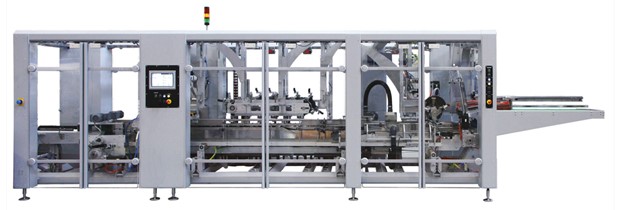
TIJ, CIJ or laser all work well with a cartoner depending on the design of the equipment, what is desired to be printed onto the carton and the design of the carton itself.
A case packer will take individual products and place them into a pre-formed corrugate case. The corrugate cases themselves are in a flat or knocked down position and then the case is erected, and the product placed within.
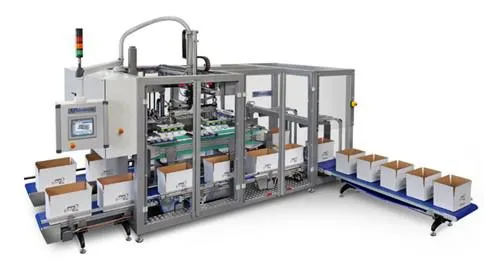
For printing onto a corrugate case, Piezo Ink Jet (PIJ) is used primarily when the corrugate is not coated and is porous. Other options would include TIJ though this has a limited print height in most cases or print and apply labeling (PALM), where grade A or grade B codes are required.
A type of packaging equipment that is in most cases considered secondary packaging is a labeler. A labeler takes either a blank or pre-printed label and places it onto a bottle, can or other type of primary packaging. Even if the label is pre-printed, most manufacturers must print some minimal variable information, like a lot code or expiration date.
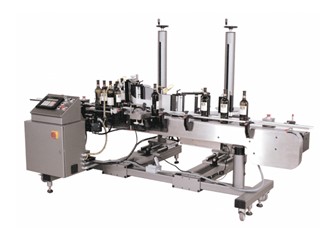
TTO, TIJ, CIJ and laser might all be options for printing on a label, but TTO is probably the most popular and economic. Regardless of the technology used, attention must be paid to the material handling where the printing occurs so that a crisp, clean code is printed every time.
Tertiary Packaging
Often also referred to as bulk or transit packaging, this type of packaging is used to group larger quantities of SKUs to transport them from point A to point B (e.g., from production facility to point of sale). During this stage, products are handled as distribution units.
Tertiary packaging might be a single case holding a carton that is secondary packaging and the primary packaging being a bottle or jar. Tertiary packaging might also be an entire pallet of cases, which is then stretched wrapped and then in most cases, a label or even multiple labels are applied to the plastic wrapped pallet.
Unless the tertiary packaging is nothing more than a corrugate case where you a printing directly onto the carton, most tertiary packaging will require a label applicator like PALM technology.
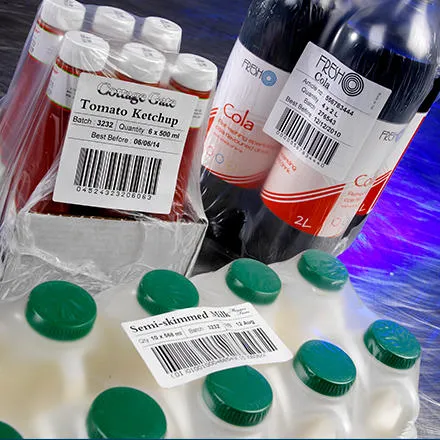
Summary
There are also many other types of lesser used packaging equipment such as sleevers, overwrappers, and shrinkwrappers to name a few. All of these can be integrated with some sort of coding and marking equipment when partnering with the right supplier with the knowledge and insight to come up with a solution.
Domino has the expertise and key partners for the best solutions in primary and secondary packaging. We have your covered, from Product to Pallet and everything in between.
If you are looking for advice on your particular packaging application, or if you think any of the products mentioned above could be the perfect fit for your production line, get in touch with your local Domino Account Manger for the solution that is best for you, or connect with me on LinkedIn or email directly (dave.featherston@domino-na.com).